Bringing Past To Present
Retro Reviews : The Nintendo Game Boy
This time Retrobear embarks on a journey of tiny screens, funny shaped and coloured moulded plastics, sore fingers and a gem of a machine. It’s the juggernaut of the handheld world, the Nintendo Game Boy.
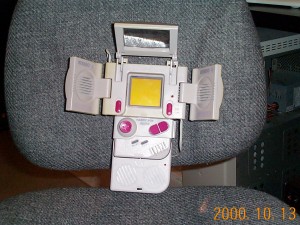
Truly a robot in disguise - the original Game Boy with Handy Boy attachment - providing additional light and stereo sound
Ahhhh the Nintendo Game Boy and it’s family of smaller more portable sequels that completely and utterly dominated that sector of the market. Never mind fighting the console wars on the 16 bit front, Oh no, Nintendo had a much bigger trick up it’s sleeve. The launch of the Game Boy in 1989 gave it an almost unrivalled position as King Of The Mini Micros. That’s not to say that there wasn’t any competition – there was and many firms tried their best to wrest the stranglehold that Nintendo had, but all failed.
Up to that point in time, handheld gaming was hardly on the gaming radar. OK that’s a little unfair as Nintendo did have the very successful Game And Watch series (for more on this have a peek-a-boo at this quite marvellous site http://www.pica-pic.com/), a succession of LCD single and dual screen games that were very popular (and now incredibly collectable). Games involving Mario, Donkey Kong, Link and many others were released and made their mark. The thing was, no one else really had a proper stab at creating a machine where you could play more than just the one game.
In 1989 Nintendo launched the Game Boy along with the most dangerous and lethal of killer applications ever bundled with a release machine : Tetris. Everyone from your mum, your nan and your dog was playing this back then. Nintendo took one look at it and decided that was the game to be given away free with the Game Boy. Only in Japan was it not packaged with the console, but by doing this, it gave everyone a game that you could play and play and play.
Whilst it may have had a monochrome screen and some games suffered from screen blurring, the Game Boy made everyone sit up and take note. Suddenly gamers could now play on the move, on the bus, in the toilet etc. A huge library of games were released ; Super Mario Land and it’s sequels, a cracking conversion of R-Type, Link makes an appearance, the Belmonts of Castlevania and so many more. Pricey they may have been, but at least you could swap and pick and choose from a huge selection.
Other companies tried to compete. Both Sega with the Game Gear, with the added bonus of having a TV tuner and an adaptor that enabled you to play Master System games on it, and Atari with the Lynx tackled Nintendo with full colour handhelds. Whilst fab to look at and a lot easier on the eye than some of the Game Boy efforts, having a colour screen meant short battery life. My goodness does the Game Gear eat batteries (Tip – if you have one and a Mega Drive simply plug the Mega Drive adaptor into the mains) and that’s the beauty of the Game Boy. The low resolution offerings enabled a much longer battery life and knowing that kids hated changing batteries, the Game Boy would allow you 3 times as much playing time compared to it’s rivals.
Sega countered again, this time with the Nomad which would play Mega Drive games. Again it suffered from a short battery life and sooner rather than later all the colour handhelds had been squeezed out. Atari would try once more with the Jaguar before dropping out of console production altogether. Sega simply couldn’t compete and stuck with what they did best, making great games and great home consoles.
The Game Boy evolved even further. The original version took 4 AA batteries and was quite chunky in size. So they scaled it down, reduced the battery size in half and launched the Game Boy Pocket. Following that, the Game Boy Color which now ran new games in full colour and was backwards compatible which meant the Game Boy’s existing library of games could be used. It even coloured them in with some basic shades.
After those successes Nintendo then launched the Game Boy Advance, a rhombo-rectangular handheld with shoulder buttons and a full colour screen. Better quality games were produced to make use of the upgraded hardware and again it was backwards compatible. That was then reduced in size to the table top Game Boy Advance SP which would fit nicely in the palm of your hand. The last one off the production line was the Game Boy Micro, which was about the size of an MP3 player. Every last ounce of goodness was squeezed from this particular orange, and every incarnation was an improvement on the last, but still allowed the link to the original version to be returned to at any time.
Truly dominant as it was, the Game Boy was probably the most surprising success of it’s time. To come from a time when Sega and Nintendo were waging war on the 8 bit home front and the Mega Drive placing Sega in total control of the 16 bit console market, the launch of the Game Boy could have been simply overwhelmed. That it is still talked about today and still used (the consoles themselves can be picked up cheaply at car boots and the games equally so) means its legacy and place in gaming history is guaranteed.
| Print article | This entry was posted by RetroBear on March 28, 2011 at 9:57 pm, and is filed under Retro Reviews. Follow any responses to this post through RSS 2.0. Both comments and pings are currently closed. |
Comments are closed.
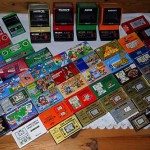
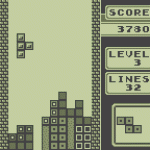
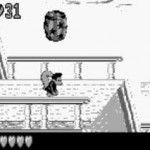


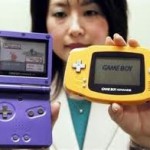
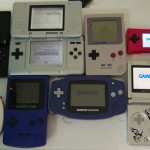










about 13 years ago
Having only ever owned a Gameboy SP Advance and a PSP, my venture into the world of handhelds has been limited.
However, I do know that until two thumbsticks arrive, the decent games won’t.
Not allowed an NGP… apparently, I already have a smartphone.
Women *shakes head and goes off mumbling*
about 13 years ago
Sorry mate I have to disagree with the two thumbsticks comment. I much prefer the single D-Pad on handhelds and in general. In fact I still do and find it impossible to cope with the need for 2 sticks on FPS games. That’s why I don’t play them.
Great game from the past got by one one controller with one or two fire buttons perfectly OK 🙂